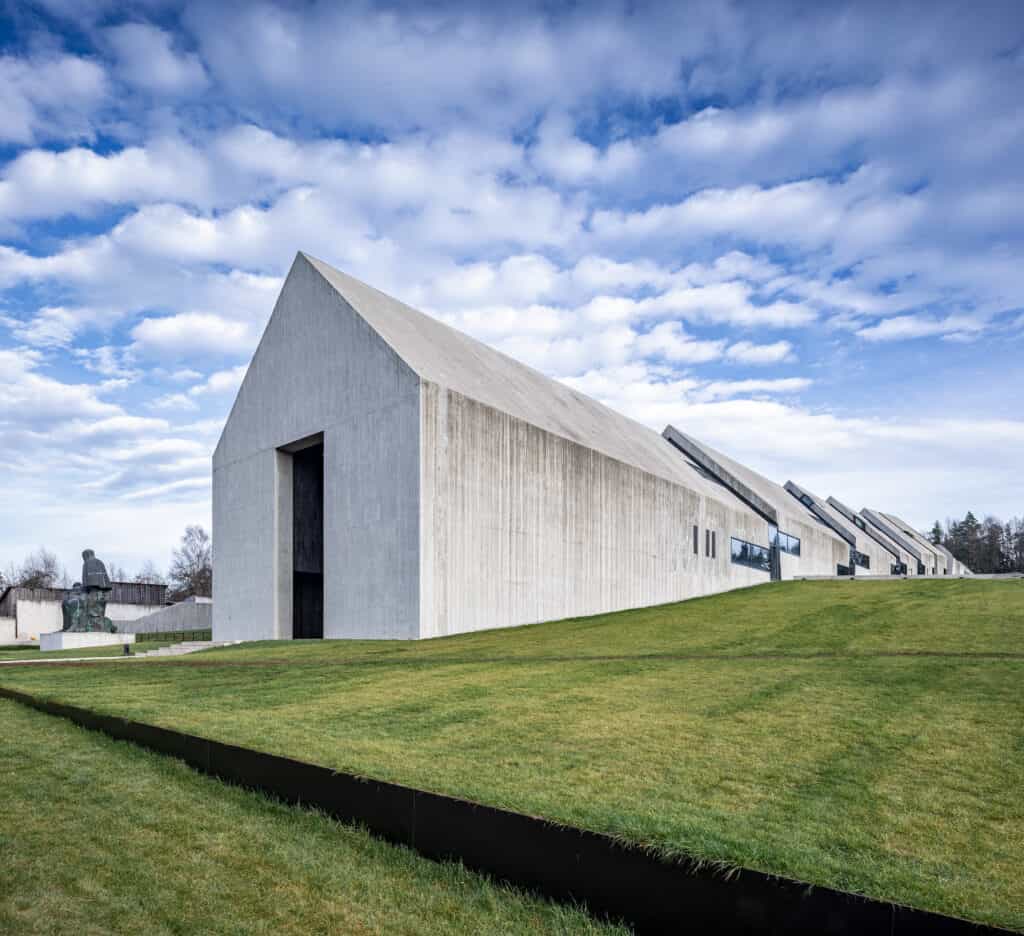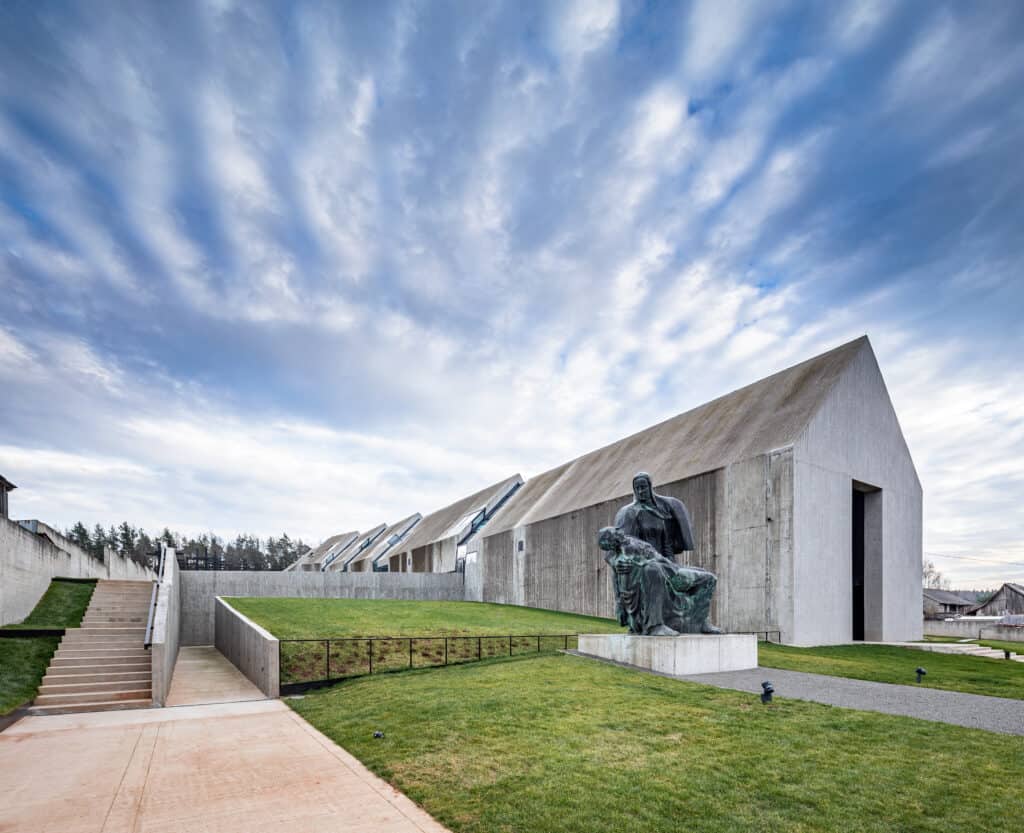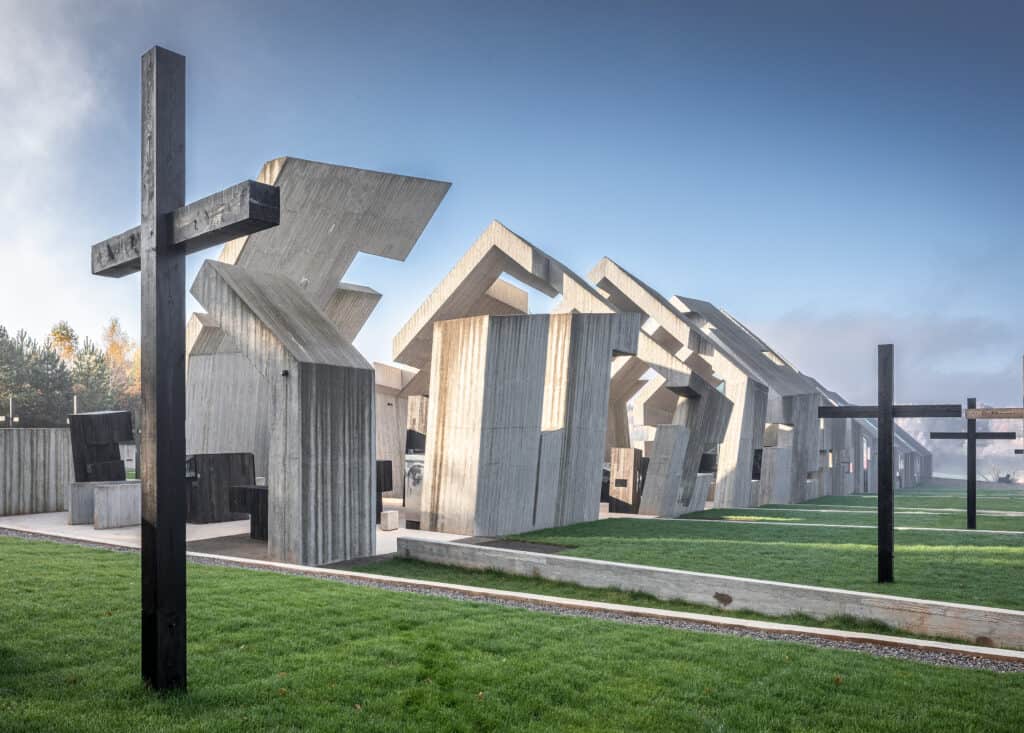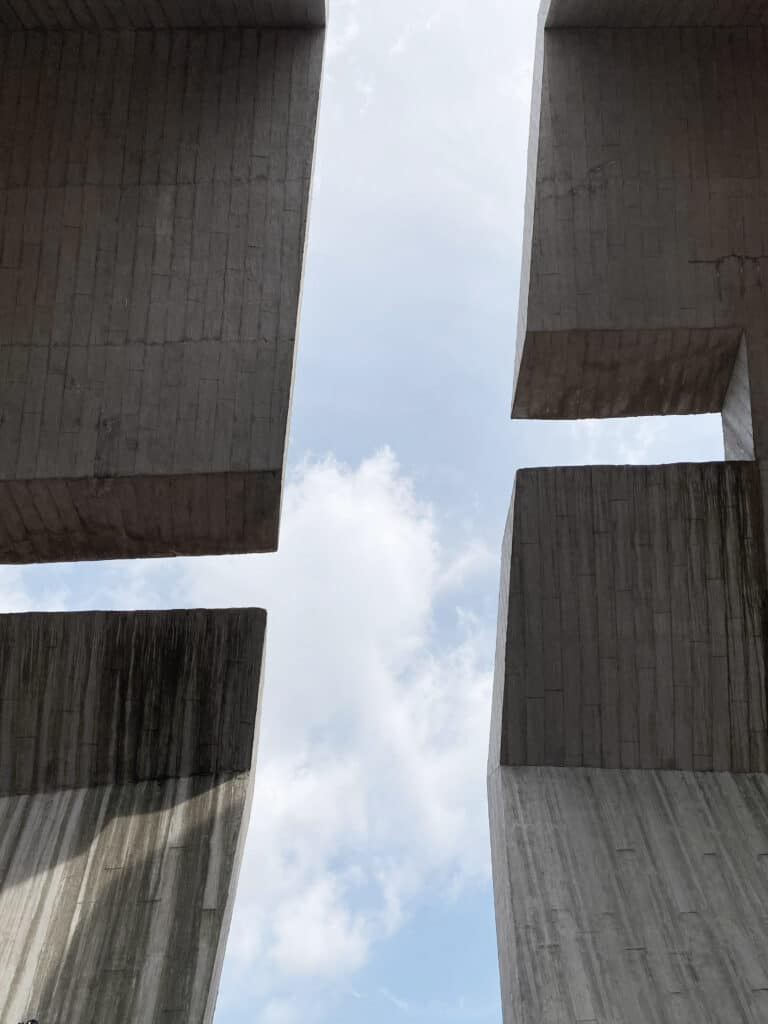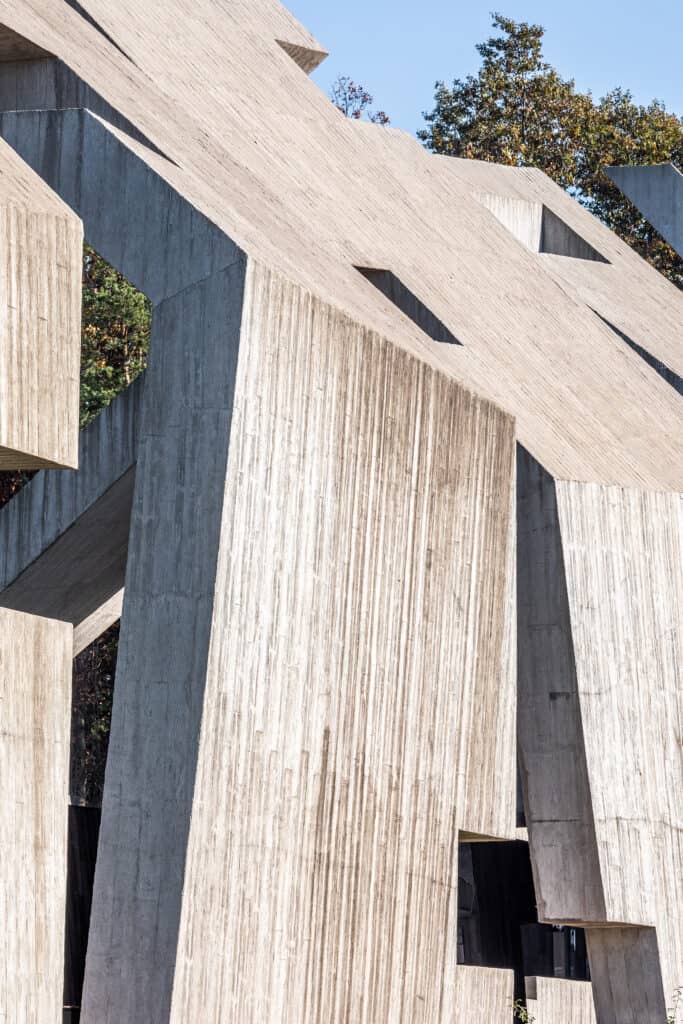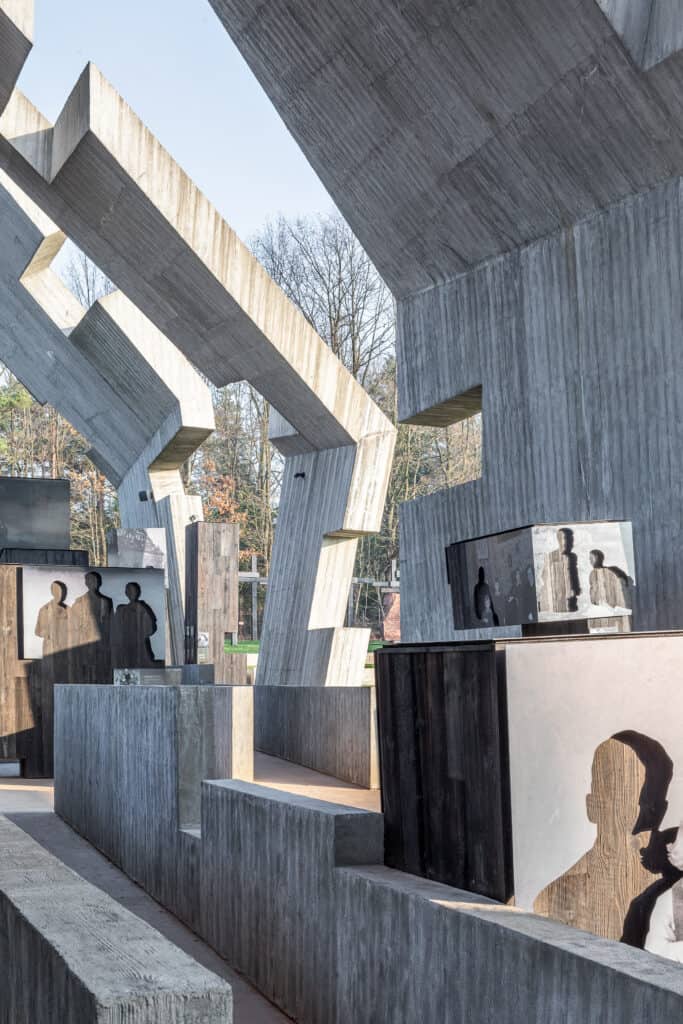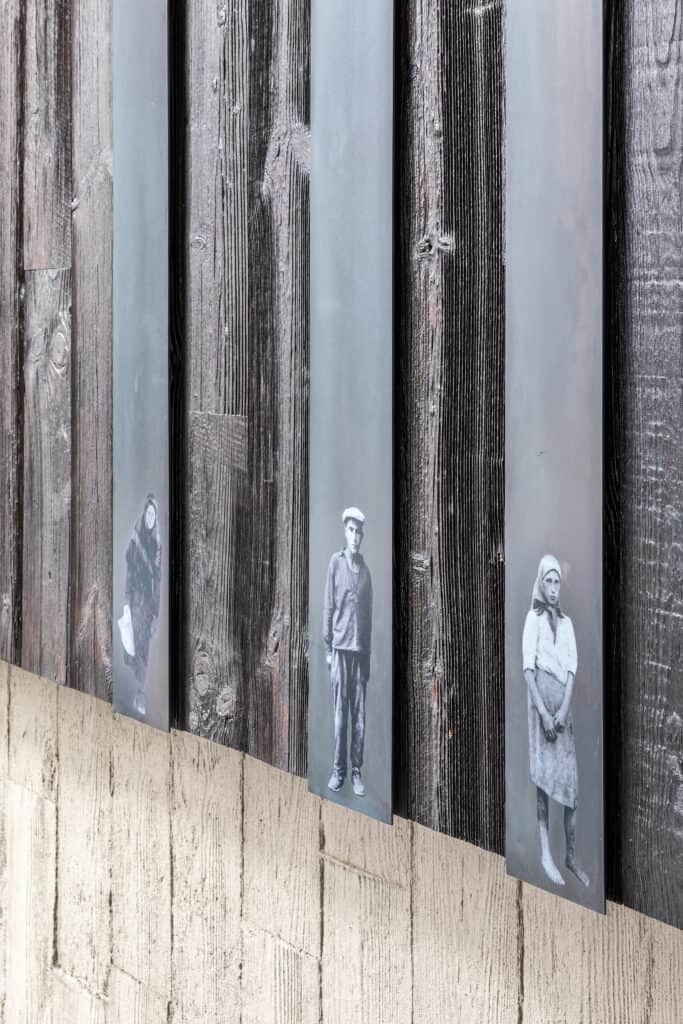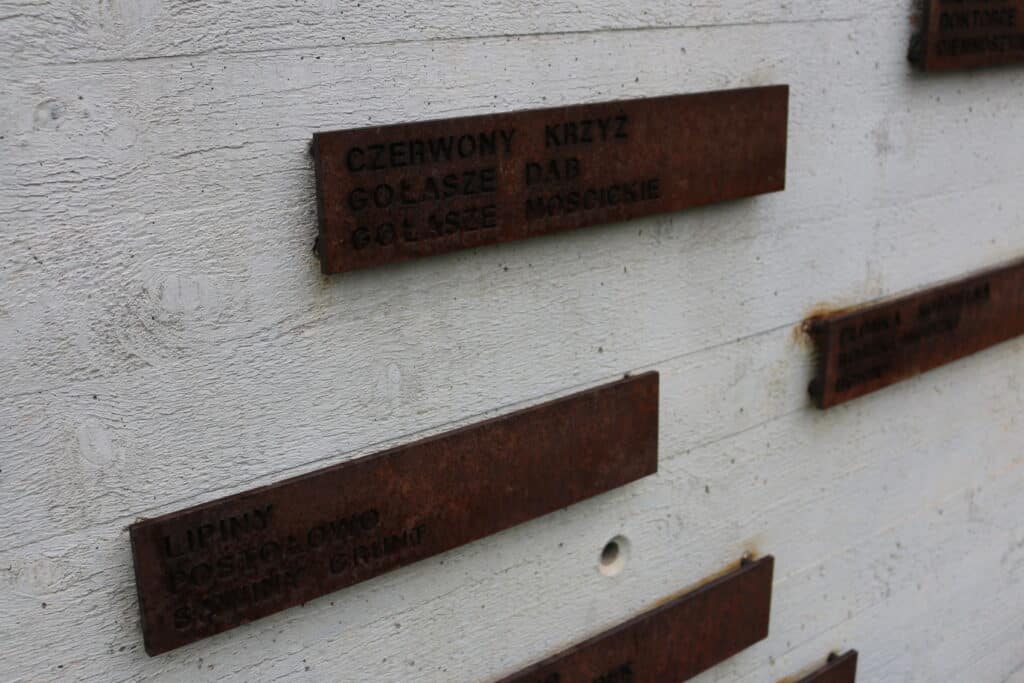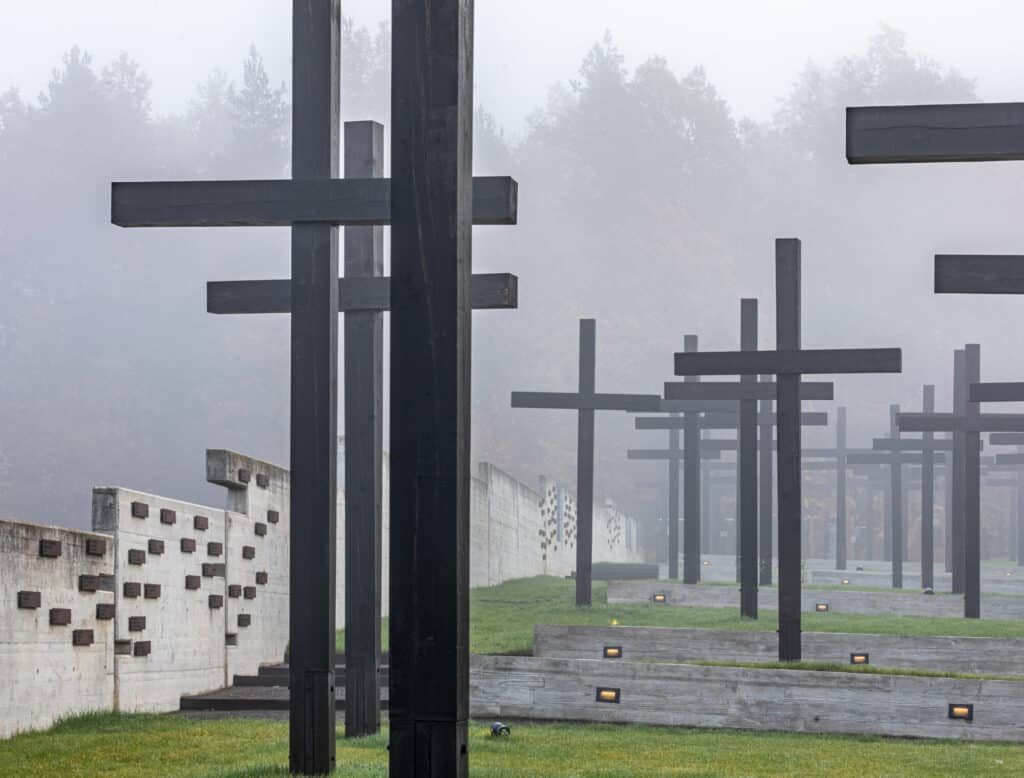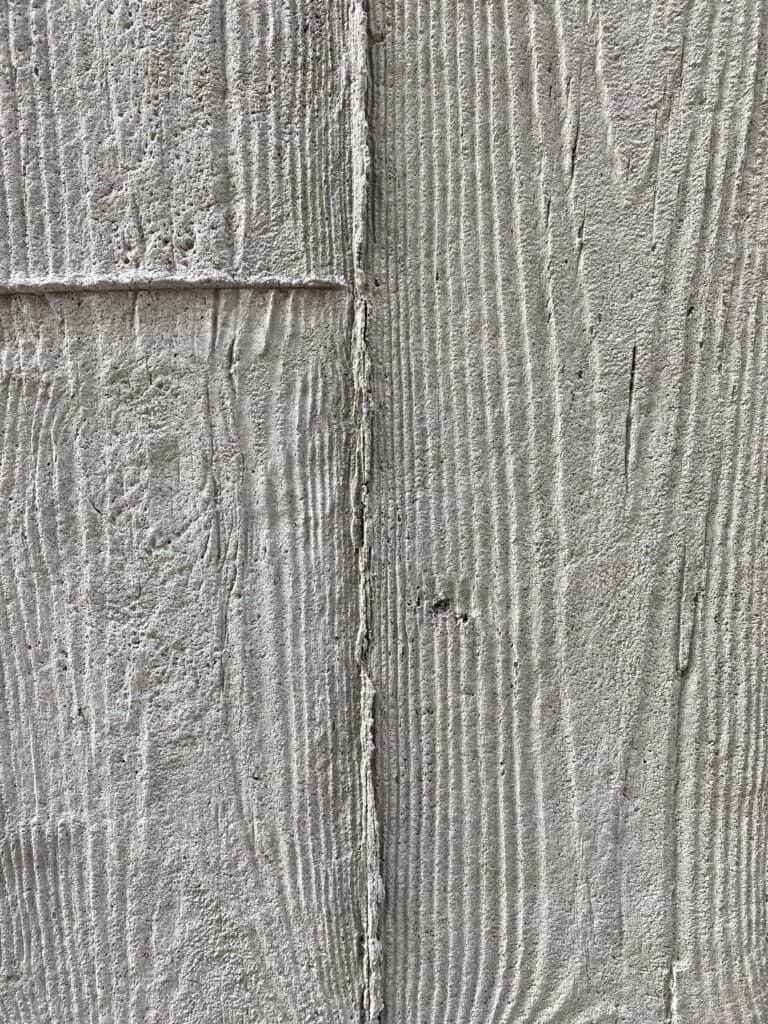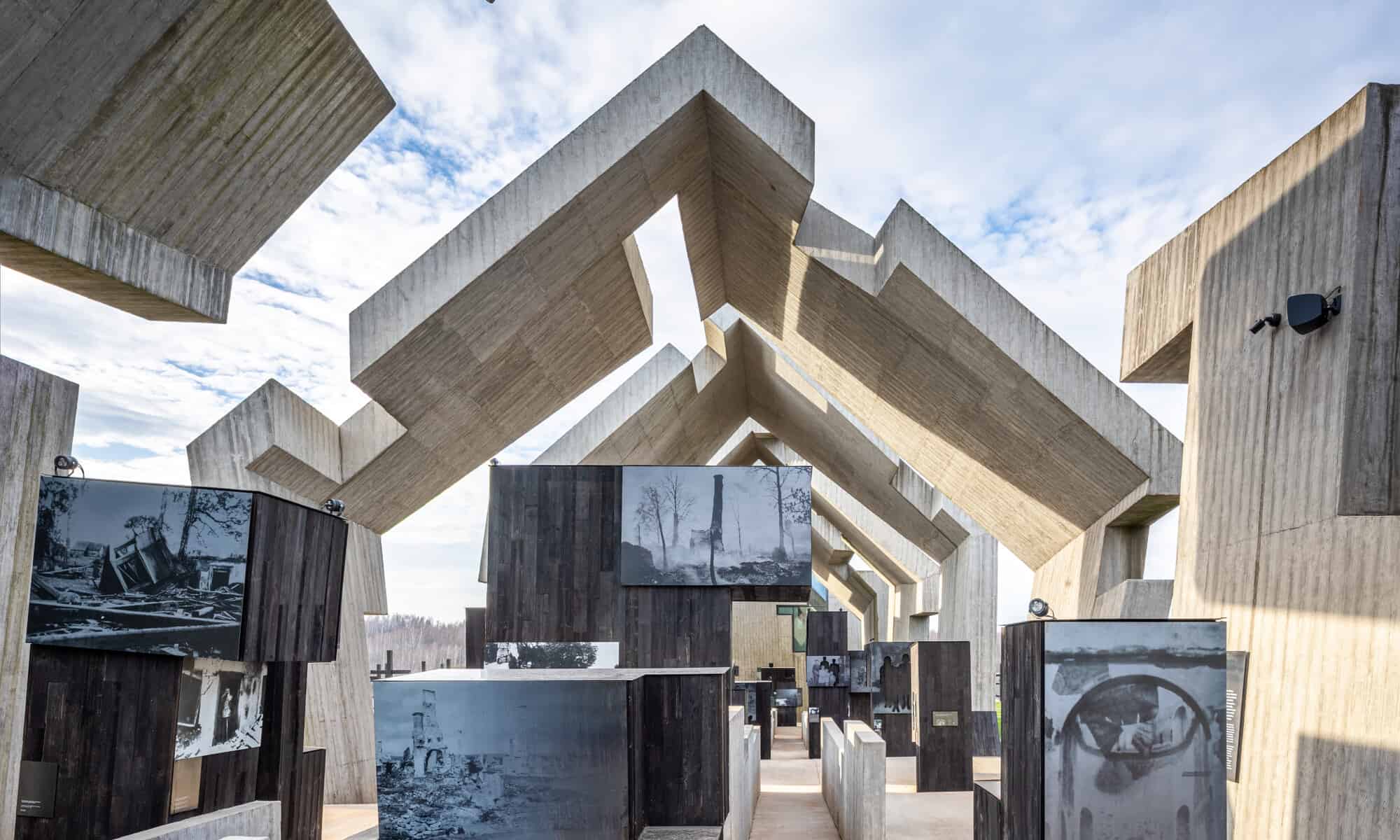
Mausoleum of the Martyrdom of Polish Villages in Michniów
In 2011, the project was honoured with the European Property Award in the Public Service Architecture category. Dezeen.com, one of the most influential portals about architecture and design, listed the Mausoleum as one of top 12 buildings to look forward to in 2016. In June 2021, Mirosław Nizio received the Internet Users’ Award for the design of the Mausoleum in the jubilee 10th edition of the POLITYKA Architectural Award competition.
The project of the Mausoleum of Martyrdom of Polish Villages in Michniów was created in 2009. That was when the team led by Mirosław Nizio won the first prize in the competition organised by the investor – the Kielce Countryside Museum. The sculptural solid of the Mausoleum is an architectural memorial; a symbol of the pacifications that took place in Michniów and other Polish villages in 1943, during World War II. The designed museum as a whole covers more than 16,000 m2.
The form of the building was determined by sculptural inspirations and the wish for unity between the architecture that is being designed and the historical narration. The monolithic body of the Mausoleum consists of 11 segments – entering the premises, the visitor first enters five closed segments. The sculptural, degraded part is open to nature, sky and landscape, changing – sometimes abruptly – as the weather conditions change. Through the glazing and the rips in the structure one can see the larch crosses surrounding the building. Their shape and symbolism inspired the form of the rips. The expressive architecture and intentional, progressive degradation of the solid create a unique atmosphere of the place. The light reaches the interior of the building through the cracks between the segments; depending on the time of the day and the season, it models the area of the permanent exhibition, located in the closed and open parts of the building.
The permanent exhibition of the Mausoleum covers an area of about 1,700 m2. As the visitors pass through successive parts of the building, they are faced with charred ruins. The materials that dominate in the interior are concrete, wood from the old huts and barns that was brought in from the surrounding villages, and black steel; they serve as a medium for the exhibition narrative. The displays present photos and historical documents, multimedia. The viewer can feel the disturbing smell of steel and blackened, scorched wood. All these factors are designed to affect the senses of the visitors. Large-sized sculptural objects of irregular shapes, resembling ruins of huts, are one of the elements of the museum content presentation. Some of them were covered with sheets of black steel with prints presenting the history of the pacification.
Nizio Design International architectural studio is the chief designer of the Mausoleum. The team led by Mirosław Nizio was responsible for the design of the architecture and the interiors as well as for land development – in the concept, construction and implementation phases. The team also oversaw the work under the project from the beginning until the completion. The studio also provided the project author’s supervision over the implementation, and Mirosław Nizio oversaw the activities related to scenography and graphic design of the permanent exhibition.
